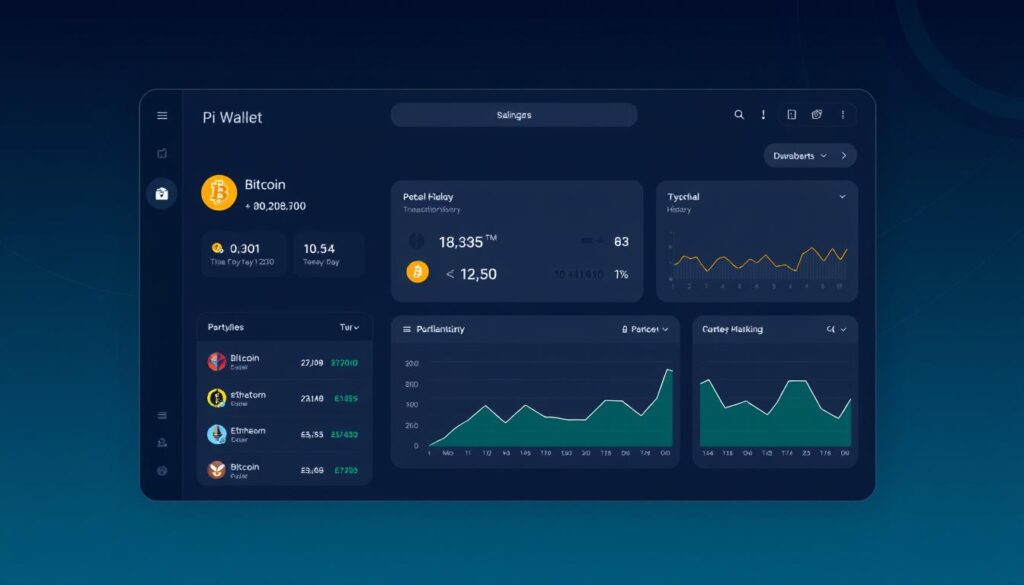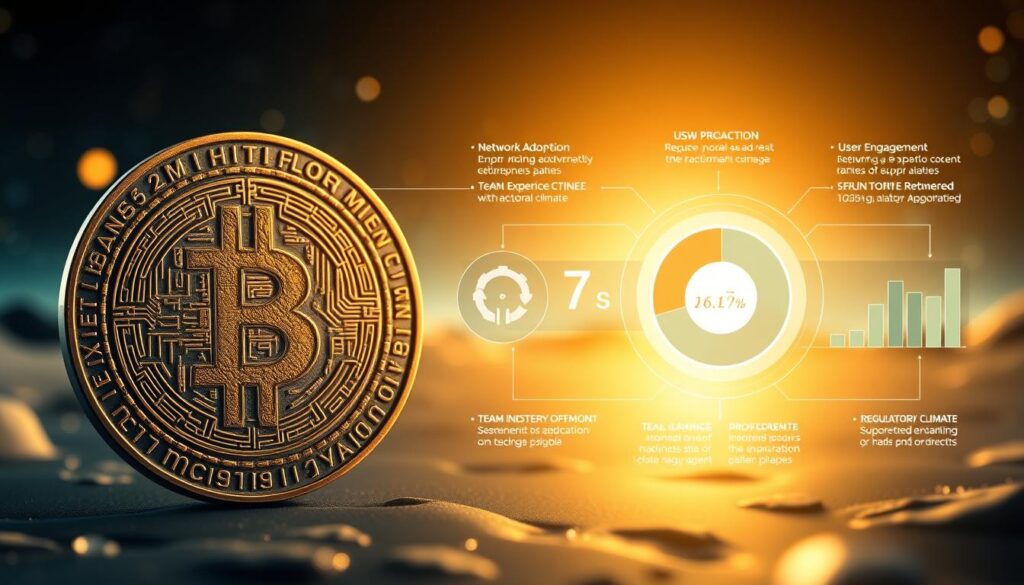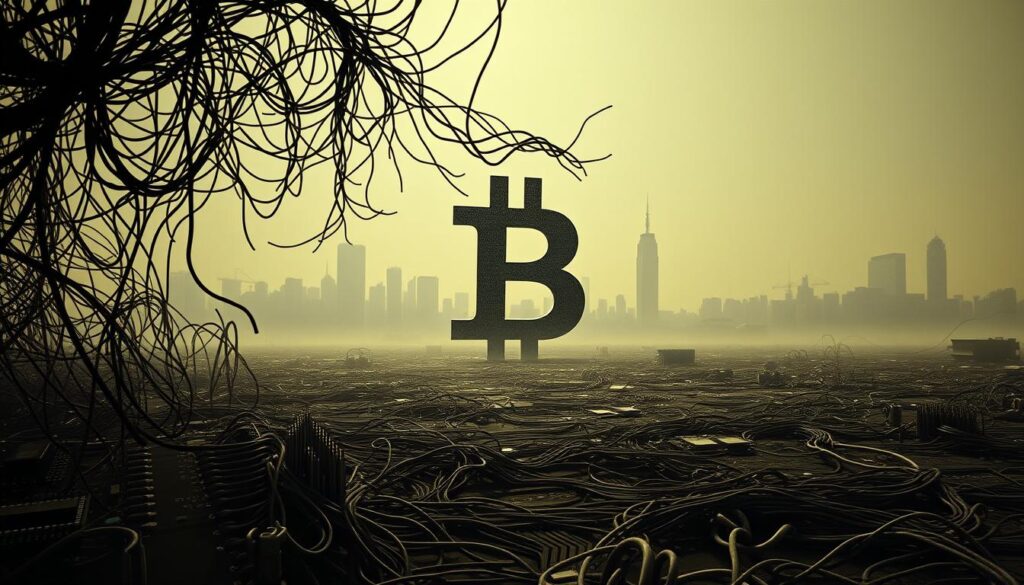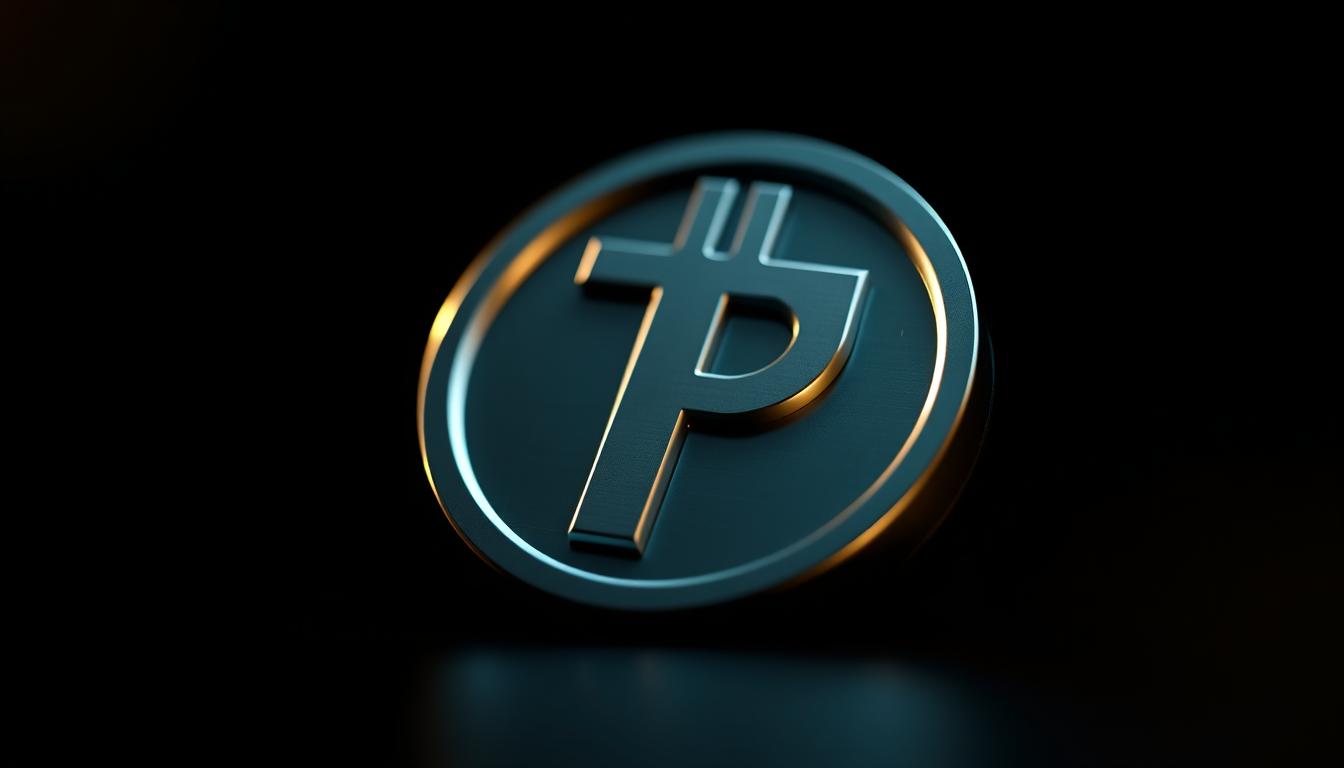Ever feel like cryptocurrency is only for tech experts? What if you could join the digital currency world without needing fancy hardware or coding skills? Pi Network is here to change that. It’s a project that puts power in your hands.
Its creators wondered, “Why should only tech-savvy people have access to crypto?” They wanted to make it easy for everyone. So, they created pi cryptocurrency, a digital currency that fits into your life like your smartphone.
Key Takeaways
- Pi Network builds pi crypto around smartphones, letting anyone earn through a mobile app.
- Traditional mining uses massive energy, but pi digital currency mining runs on your phone, no costly rigs required.
- The pi network uses social trust to secure transactions, creating a system where neighbors and contacts help verify your activity.
- Over 40 million users already joined the pi network, proving its appeal as a people-first cryptocurrency.
- Pi cryptocurrency aims to bridge the gap between cutting-edge tech and everyday accessibility.
Introduction to Pi Cryptocurrency
Pi cryptocurrency is a new way to use digital money that’s easy for everyone to access. It’s built on a decentralized network that aims to make advanced tech simple for users. Unlike other blockchain systems, Pi uses mobile mining to make it easy to join.
The Vision Behind Pi Network
The pi network started in 2019 with a big dream: to make crypto for everyone. Dr. Nassim Taleb and Dr. Ido Bentov wanted a system that’s both secure and open to all. They aimed to create a currency that grows with its users, not against them.
How Pi Differs from Traditional Cryptocurrencies
Traditional crypto needs lots of energy to mine. Pi is different with three main changes:
- Mobile mining that works on smartphones
- No high-cost hardware needed
- Decentralized network run by users
This way, Pi uses less energy and keeps things secure through social checks.
The Growing Pi Community
The pi network has over 35 million users in 200+ countries. People work together in social circles to build trust. This growth makes pi coin a strong contender against old payment systems.
The Origins and Development of Pi Network
In 2019, the pi network was launched by Dr. Nicolas Kokkalis and Dr. Chengdiao Fan. Both are experts in blockchain technology and distributed systems. Their goal was to make a secure and easy-to-use pi digital currency.
https://www.youtube.com/watch?v=IDUOMJJOcdA
The network started on Pi Day (3/14) in March 2019. It was designed to be mobile-friendly from the start. By 2020, it had grown to over 10 million users, thanks to its unique mobile mining feature.
| Phase | Year | Milestone |
|---|---|---|
| Research | 2018 | Core team formed; whitepaper drafted |
| Launch | 2019 | Public release on Pi Day; testnet activation |
| Growth | 2020–2022 | Community expands to 30 million users; partnerships with tech innovators |
By 2023, the pi token had become a community-driven project. It focuses on decentralized governance. The team’s academic background and focus on practical use continue to shape its future.
Understanding the Technology Behind Pi Cryptocurrency
Pi Network uses blockchain technology to make its system open and efficient. It’s built on a decentralized network idea. This means users can join without needing a central authority. Let’s explore what makes Pi’s tech special.
Pi’s Blockchain Infrastructure
The pi network has a blockchain setup. Every deal is recorded in a permanent ledger. This blockchain technology checks data through user nodes, making it clear and safe.
Transactions are put into blocks and linked in order. This way, everyone gets the latest info.
Consensus Algorithm: Stellar Consensus Protocol
Pi doesn’t use the energy-heavy proof-of-work like Bitcoin. Instead, it uses the Stellar Consensus Protocol (SCP). This method votes on transactions, making it fast and energy-friendly.
SCP keeps the blockchain technology safe. It’s good for quick confirmations and is better for the planet.
Security Features of the Pi Network
Keeping user assets safe is Pi’s main goal. It has several key security features:
- Secure transactions thanks to top-notch encryption to stop scams
- A social trust layer where users check each other’s identities
- Regular checks and updates to fix any weak spots
These steps help make secure transactions easy for everyone.
How Mobile Mining Works in the Pi Ecosystem

Mobile mining through the Pi Network app makes crypto mining easy. It doesn’t use a lot of energy like old methods. Instead, it uses smartphones to mine, even when they’re not in use. This way, it doesn’t use up your battery.
Here’s how you can start:
Getting Started with Pi Mining
- Download the mobile mining app from app stores.
- Create an account using a verified phone number.
- Join or form a “Security Circle” of trusted contacts.
- Enable mining in the background—no constant device interaction required.
Energy Efficiency of Pi Mining vs. Traditional Crypto Mining
| Feature | Pi Mining | Traditional Crypto Mining |
|---|---|---|
| Energy Use | Minimal (phone battery) | High (specialized hardware) |
| Hardware | Smartphone | Expensive ASIC miners |
| Cost | Free to start | High upfront costs |
Security Circle: The Social Trust Layer
A key part of the pi network, Security Circles use friends to check if you’re real. It’s like a trust system that works without needing a central place for data. This keeps things safe and private.
The Pi Network Ecosystem Components
The pi network ecosystem is built with tools and services for a decentralized economy. It has a mobile app, blockchain, and a marketplace. These parts help with peer-to-peer payments and managing digital assets.
- Mobile App: The gateway for users to access mining, transactions, and the marketplace.
- Blockchain: A secure ledger powered by the Stellar Consensus Protocol.
- Marketplace: A platform for exchanging goods and services using Pi coins.
- Node Network: Maintains security and transaction validation.
These elements form a decentralized network. Miners, node operators, and developers help it grow. Miners get rewards, and developers create apps to add features. The system is designed for easy access, letting users trade digital assets directly.
Users can try out features in the testnet phase. The mainnet launch is coming soon. Each part supports the network’s aim: making peer-to-peer payments and services easy and decentralized.
Pi Wallet and Managing Your Digital Assets
Managing your pi cryptocurrency is easier with the Pi Wallet. This app lets you store, send, and track digital assets safely. It’s easy to use, making blockchain accessible to everyone.

Setting Up Your Pi Wallet
To start, link your account to the Pi Network app. Here’s how:
- Open the Pi Network app and go to the Wallet tab.
- Choose a strong password and turn on biometric login if you can.
- Look at backup options to get back in if you lose your device.
Security Best Practices for Pi Storage
Keep your assets safe with these tips:
- Always use two-factor authentication (2FA).
- Don’t share your login or seed phrases with anyone.
- Keep the app updated to fix security issues.
“The Pi Wallet’s encryption meets top security standards,” says Pi Network’s security paper.
Future Payment Capabilities
Soon, you’ll be able to use pi cryptocurrency in everyday life. Merchants might accept it, and you can send money to friends. These changes will make blockchain useful for spending in the real world.
Current Status of Pi Network: Phases and Milestones
To understand Pi Network, we must look at its three main phases: Beta, Testnet, and Mainnet. Each phase is a step toward making the pi cryptocurrency system fully functional.
The developers chose a phased approach for stability and growth. The Beta phase laid the blockchain technology groundwork. The Testnet allowed for community testing of transactions and security. The Mainnet launch will mark the start of decentralized operations.
From Testing to Mainnet: Understanding Pi’s Roadmap
Here are the key phases in Pi Network’s development:
- Beta Phase: Started in 2019, it tested the core mining mechanics with users.
- Testnet Phase: Launched in 2021, it simulated transactions without real value.
- Mainnet Phase: Set for 2024, it will make the pi digital currency available for use.
Verification Process and KYC Requirements
Verification is key to meet global rules. The process includes:
- Confirming identity with government-issued IDs.
- Checking network activity to prevent fraud.
- Using biometrics for extra security.
These steps follow blockchain technology standards for legal reasons.
Recent Developments in the Pi Network
Recent updates show progress toward key goals:
| Milestone | Status | Date |
|---|---|---|
| Mainnet beta testing | Active | Q3 2023 |
| KYC integration | Phased rollout | 2023-2024 |
| Merchant partnerships | 20+ global businesses onboarded | 2023 |
These updates show the pi network’s steady move toward its goal of accessible decentralized finance.
Potential Value and Investment Considerations
When looking at pi coin as a digital asset, key factors include adoption rates and real-world use. The pi price will depend on market demand when it moves to the mainnet. The Pi Network aims for long-term value, not quick gains.
- Adoption by businesses and users drives utility, which can influence value.
- Scarcity mechanisms, including capped supply, may affect price dynamics.
- Global regulatory changes could impact its position in the crypto market.

Now, pi investment chances are limited because the coin isn’t on exchanges yet. The Pi Core Team warns against speculative trading until the official launch. Always check if any service claiming to offer pi coin transactions is real, as fake ones might exist.
“Our focus is on building a sustainable ecosystem, not manipulating short-term price trends,” states the Pi Network whitepaper.
For those interested in pi investment, understanding its tech and roadmap is key. It’s like any other cryptocurrency, with risks from market swings and rules changes. Treat it as part of a varied portfolio and only follow updates from official sources.
Comparing Pi to Other Cryptocurrencies in the Market
Pi cryptocurrency is similar to Bitcoin and Ethereum but has its own twist. It’s made for everyday people, using a decentralized network on mobile devices. This is different from the usual mining ways.
Pi vs. Bitcoin and Ethereum
- Pi needs little energy for “mobile mining,” unlike Bitcoin’s big energy use.
- Ethereum’s smart contracts are different from Pi’s easy-to-use Pi app.
- Pi’s fast and easy transactions don’t have Ethereum’s high fees.
Advantages of Pi’s Approach to Decentralization
Pi’s decentralized network uses “Security Circles” for user verification. This makes it easy for anyone with a smartphone to join. It’s simpler than Ethereum’s proof-of-stake.
Market Position and Market Position and Position and and and and and and and and and and and and and and and and and and and and and and and and and and and and and and and and and and and and and and and and and and and and and and and and and and and and and and and and and and and and and and and and and and and and and and and and and and and and and and and and and and and and and and and and and and and and and and and and and and and and and and and and and and and and and and and and and and and and and and and and and and and and and and and and and and and and and and and and and and and and and and and and and and and and and and and and and and and and and and and and and and and and and and and and and and and and and and and and and and and and and and and and and and and and and and and and and and and and and <a href=”https://www.investopedia.com/financial-edge/1210/10-5-reasons-why-pi-c<h2>Common%20Criticisms%20and%20Misconceptions%20About%20Pi</h2><p>As%20more%20people%20get%20interested%20in%20pi%20cryptocurrency,%20they%20have%20questions%20about%20its%20trustworthiness.%20This%20section%20aims%20to%20clear%20up%20these%20doubts%20for%20users.</p> <table>%0A<tr><th>Misconception</th><th>Fact</th></tr>%0A<tr><td>%E2%80%9CPi%20Network%20is%20a%20scam%E2%80%9D</td><td>Pi%E2%80%99s%20code%20is%20open-source,%20and%20updates%20are%20publicly%20tracked.%20The%20project%20operates%20with%20transparency%20from%20its%202019%20launch.</td></tr>%0A<tr><td>%E2%80%9CNo%20real-world%20value%20exists%E2%80%9D</td><td>Pi%20crypto%E2%80%99s%20value%20depends%20on%20adoption.%20Partnerships%20and%20future%20use%20cases%20will%20determine%20its%20utility%20post-mainnet%20launch.</td></tr>%0A<tr><td>%E2%80%9CDevelopment%20is%20too%20slow%E2%80%9D</td><td>Phased%20growth%20prioritizes%20stability.%20The%20team%20focuses%20on%20security%20before%20transitioning%20to%20the%20mainnet.</td></tr>%0A</table><p>Some%20critics%20wonder%20why%20the%20<em>pi%20token</em>%20isn%E2%80%99t%20tradable%20yet.%20Official%20statements%20confirm%20it%20will%20remain%20locked%20until%20regulatory%20compliance%20is%20finalized.%20This%20approach%20aims%20to%20avoid%20premature%20speculation.</p><blockquote>%E2%80%9CThe%20Pi%20Network%20prioritizes%20user%20safety%20over%20speed,%E2%80%9D%20states%20the%20official%20website,%20addressing%20concerns%20about%20delayed%20milestones.</blockquote><p>Others%20doubt%20the%20team%E2%80%99s%20credibility.%20Founders%20Nicolas%20Kokkalis%20and%20others%20have%20academic%20backgrounds%20in%20computer%20science,%20aligning%20with%20blockchain%20development%20standards.%20Public%20forums%20and%20roadmaps%20ensure%20ongoing%20community%20engagement.</p><h2>The%20Future%20Outlook%20for%20Pi%20Cryptocurrency</h2><p>As%20the%20<em>pi%20network</em>%20gets%20ready%20for%20its%20mainnet%20launch,%20developers%20are%20working%20on%20big%20updates.%20They%20aim%20to%20make%20the%20<em>pi%20cryptocurrency</em>%20better%20for%20daily%20use.%20This%20includes%20faster%20transactions%20and%20easier%20wallet%20tools%20for%20peer-to-peer%20payments.</p><blockquote>%E2%80%9CThe%20Pi%20Network%E2%80%99s%20mission%20is%20to%20empower%20everyday%20users%20with%20a%20decentralized%20financial%20system,%E2%80%9D%20states%20the%20team%E2%80%99s%20whitepaper.%20%E2%80%9COur%20roadmap%20prioritizes%20usability%20and%20security.%E2%80%9D</blockquote><p>Potential%20market%20integration%20could%20happen%20in%20three%20main%20ways:%20</p><ul>%0A<li>Exchange%20listings%20expanding%20access%20for%20<em>pi%20investment</em>%20opportunities</li>%0A<li>Partnerships%20with%20merchants%20accepting%20Pi%20for%20goods/services</li>%0A<li>Integration%20with%20other%20blockchain%20platforms</li></ul><p>The%20long-term%20vision%20is%20to%20create%20a%20self-sustaining%20ecosystem.%20Here,%20<em>pi%20network</em>%20users%20will%20help%20govern%20and%20build%20dApps.%20The%20main%20goals%20are:%20</p><ul>%0A<li>Global%20adoption%20of%20Pi%20as%20a%20mainstream%20payment%20method</li>%0A<li>Enhanced%20privacy%20features%20for%20transactions</li>%0A<li>Expanded%20developer%20tools%20for%20innovation</li></ul><p>Despite%20challenges%20like%20regulatory%20hurdles%20and%20competition,%20the%20<em>pi%20cryptocurrency</em>%20stands%20out.%20Its%20mobile-first%20design%20makes%20it%20unique.%20Success%20will%20depend%20on%20following%20its%20roadmap%20and%20solving%20real-world%20transaction%20needs.</p><h2>Conclusion</h2><p>Pi%20Cryptocurrency%20is%20a%20mobile-first%20option,%20making%20it%20easy%20to%20join%20without%20the%20need%20for%20lots%20of%20energy.%20It’s%20moving%20towards%20Mainnet,%20focusing%20on%20being%20green%20and%20building%20trust.%20The%20Stellar%20Consensus%20Protocol%20helps%20keep%20transactions%20safe.</p><p>But,%20there%20are%20challenges%20like%20not%20knowing%20what%20the%20rules%20will%20be.%20The%20community-driven%20approach%20is%20new%20and%20exciting.%20It’s%20important%20for%20users%20to%20stay%20informed%20and%20have%20realistic%20hopes.</p><p>Even%20with%20unknown%20results,%20Pi’s%20goal%20to%20make%20digital%20assets%20easy%20to%20use%20is%20inspiring.%20It%20might%20change%20how%20we%20think%20about%20decentralized%20systems.%20Pi%20aims%20to%20make%20things%20simple%20yet%20secure.</p><section%20itemscope%20itemprop=” mainentity itemtype=”https://schema.org/FAQPage”>
<table>%0A<tr><th>Misconception</th><th>Fact</th></tr>%0A<tr><td>%E2%80%9CPi%20Network%20is%20a%20scam%E2%80%9D</td><td>Pi%E2%80%99s%20code%20is%20open-source,%20and%20updates%20are%20publicly%20tracked.%20The%20project%20operates%20with%20transparency%20from%20its%202019%20launch.</td></tr>%0A<tr><td>%E2%80%9CNo%20real-world%20value%20exists%E2%80%9D</td><td>Pi%20crypto%E2%80%99s%20value%20depends%20on%20adoption.%20Partnerships%20and%20future%20use%20cases%20will%20determine%20its%20utility%20post-mainnet%20launch.</td></tr>%0A<tr><td>%E2%80%9CDevelopment%20is%20too%20slow%E2%80%9D</td><td>Phased%20growth%20prioritizes%20stability.%20The%20team%20focuses%20on%20security%20before%20transitioning%20to%20the%20mainnet.</td></tr>%0A</table><p>Some%20critics%20wonder%20why%20the%20<em>pi%20token</em>%20isn%E2%80%99t%20tradable%20yet.%20Official%20statements%20confirm%20it%20will%20remain%20locked%20until%20regulatory%20compliance%20is%20finalized.%20This%20approach%20aims%20to%20avoid%20premature%20speculation.</p><blockquote>%E2%80%9CThe%20Pi%20Network%20prioritizes%20user%20safety%20over%20speed,%E2%80%9D%20states%20the%20official%20website,%20addressing%20concerns%20about%20delayed%20milestones.</blockquote><p>Others%20doubt%20the%20team%E2%80%99s%20credibility.%20Founders%20Nicolas%20Kokkalis%20and%20others%20have%20academic%20backgrounds%20in%20computer%20science,%20aligning%20with%20blockchain%20development%20standards.%20Public%20forums%20and%20roadmaps%20ensure%20ongoing%20community%20engagement.</p><h2>The%20Future%20Outlook%20for%20Pi%20Cryptocurrency</h2><p>As%20the%20<em>pi%20network</em>%20gets%20ready%20for%20its%20mainnet%20launch,%20developers%20are%20working%20on%20big%20updates.%20They%20aim%20to%20make%20the%20<em>pi%20cryptocurrency</em>%20better%20for%20daily%20use.%20This%20includes%20faster%20transactions%20and%20easier%20wallet%20tools%20for%20peer-to-peer%20payments.</p><blockquote>%E2%80%9CThe%20Pi%20Network%E2%80%99s%20mission%20is%20to%20empower%20everyday%20users%20with%20a%20decentralized%20financial%20system,%E2%80%9D%20states%20the%20team%E2%80%99s%20whitepaper.%20%E2%80%9COur%20roadmap%20prioritizes%20usability%20and%20security.%E2%80%9D</blockquote><p>Potential%20market%20integration%20could%20happen%20in%20three%20main%20ways:%20</p><ul>%0A<li>Exchange%20listings%20expanding%20access%20for%20<em>pi%20investment</em>%20opportunities</li>%0A<li>Partnerships%20with%20merchants%20accepting%20Pi%20for%20goods/services</li>%0A<li>Integration%20with%20other%20blockchain%20platforms</li></ul><p>The%20long-term%20vision%20is%20to%20create%20a%20self-sustaining%20ecosystem.%20Here,%20<em>pi%20network</em>%20users%20will%20help%20govern%20and%20build%20dApps.%20The%20main%20goals%20are:%20</p><ul>%0A<li>Global%20adoption%20of%20Pi%20as%20a%20mainstream%20payment%20method</li>%0A<li>Enhanced%20privacy%20features%20for%20transactions</li>%0A<li>Expanded%20developer%20tools%20for%20innovation</li></ul><p>Despite%20challenges%20like%20regulatory%20hurdles%20and%20competition,%20the%20<em>pi%20cryptocurrency</em>%20stands%20out.%20Its%20mobile-first%20design%20makes%20it%20unique.%20Success%20will%20depend%20on%20following%20its%20roadmap%20and%20solving%20real-world%20transaction%20needs.</p><h2>Conclusion</h2><p>Pi%20Cryptocurrency%20is%20a%20mobile-first%20option,%20making%20it%20easy%20to%20join%20without%20the%20need%20for%20lots%20of%20energy.%20It’s%20moving%20towards%20Mainnet,%20focusing%20on%20being%20green%20and%20building%20trust.%20The%20Stellar%20Consensus%20Protocol%20helps%20keep%20transactions%20safe.</p><p>But,%20there%20are%20challenges%20like%20not%20knowing%20what%20the%20rules%20will%20be.%20The%20community-driven%20approach%20is%20new%20and%20exciting.%20It’s%20important%20for%20users%20to%20stay%20informed%20and%20have%20realistic%20hopes.</p><p>Even%20with%20unknown%20results,%20Pi’s%20goal%20to%20make%20digital%20assets%20easy%20to%20use%20is%20inspiring.%20It%20might%20change%20how%20we%20think%20about%20decentralized%20systems.%20Pi%20aims%20to%20make%20things%20simple%20yet%20secure.</p><section%20itemscope%20itemprop=” mainentity itemtype=”https://schema.org/FAQPage”>
FAQ
What is Pi Cryptocurrency?
Pi Cryptocurrency is a digital money that wants to make finance more open. It lets users mine Pi coins with their phones. Unlike other cryptos, Pi is easy to use and doesn’t need expensive gear or tech skills.
How does Pi Mining work?
Pi Mining uses a mobile app. Users earn Pi coins by clicking a button daily. It’s green because it uses little energy, unlike old mining methods.
Why is Pi considered a decentralized network?
Pi is a decentralized network because it uses blockchain for safe transactions. This way, no one controls it, making peer-to-peer payments safe.
What are the security features of the Pi Network?
Pi has strong security, like the Stellar Consensus Protocol to stop fake transactions. It also has a Security Circle to build trust among users through social connections.
How can I store my Pi coins?
Store your Pi coins in a Pi Wallet through the app. Keep your digital assets safe by using strong passwords and device security.
What is the future of Pi Cryptocurrency?
Pi’s future value depends on its use, adoption, and market performance. The Pi Team focuses on long-term value, not quick gains.
How does Pi compare to Bitcoin and Ethereum?
Pi is different from Bitcoin and Ethereum because it doesn’t need lots of energy or special hardware. It’s easier for more people to use.
Are there any misconceptions about Pi Cryptocurrency?
Yes, people often get things wrong about Pi, like its tradability and mining. Always check official sources to clear up these myths.
What are the upcoming features for the Pi Network?
Pi’s future updates might include better wallets, node software, and tools for developers. These will help make Pi useful for everyday transactions.
What investment considerations should I have regarding Pi?
Investing in Pi is risky because it’s not tradable yet. Always do your homework and be careful before investing.
